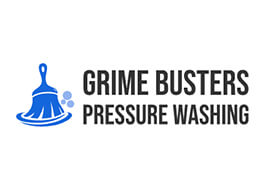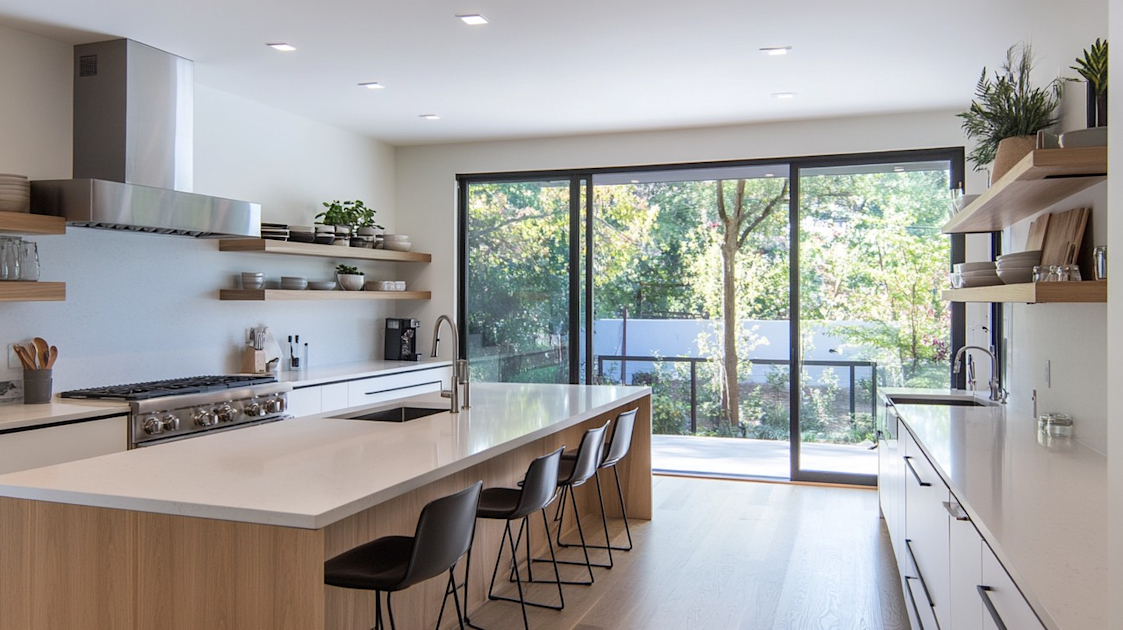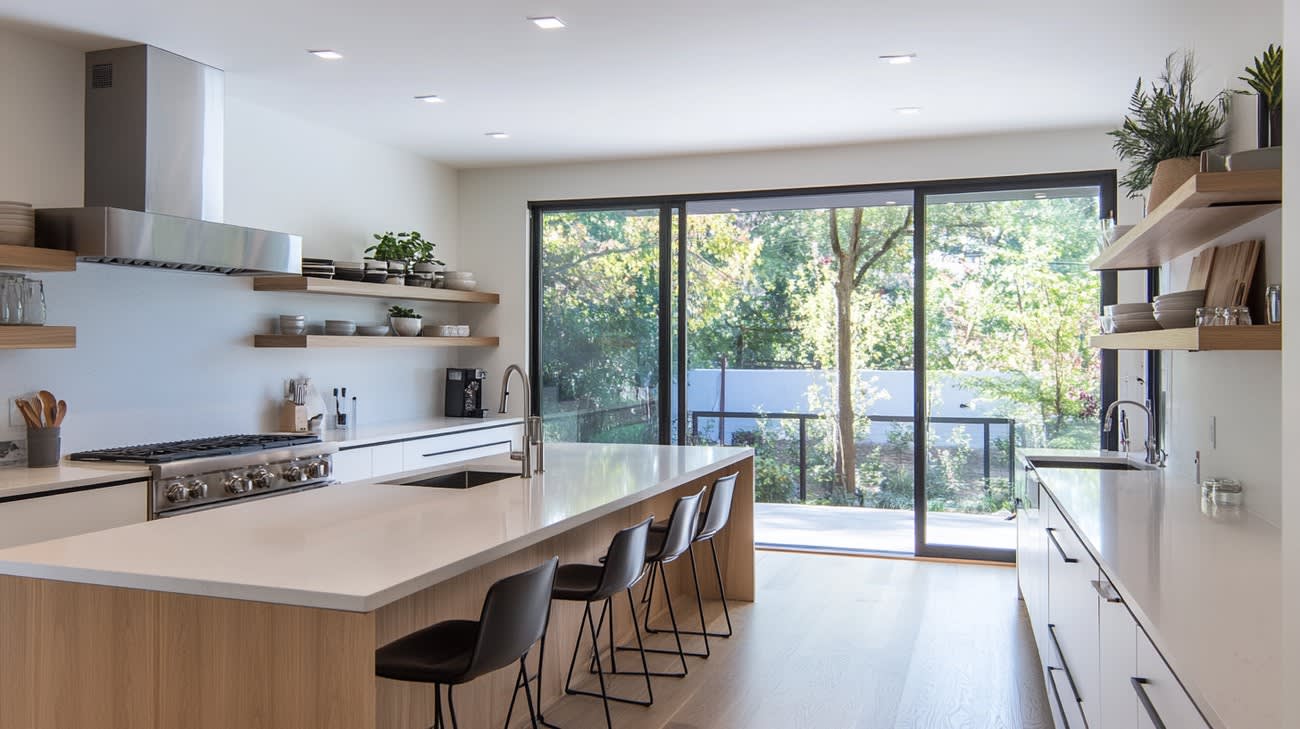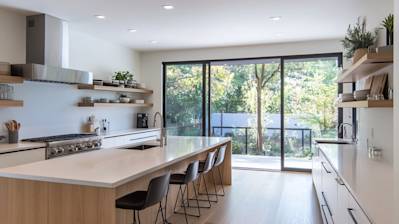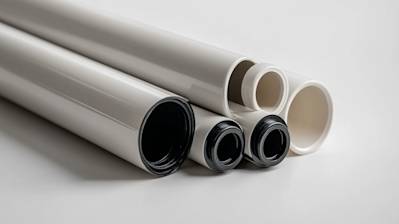Remodeling a kitchen is an exciting endeavor. Beyond aesthetics and appliances, plumbing plays a pivotal role in a successful kitchen remodel. If not planned and executed properly, plumbing issues can compromise your project. In this article, we'll navigate the intricacies of kitchen remodel plumbing to help you efficiently undertake this crucial aspect of your renovation.
Mapping Your Plumbing Blueprint in Kitchen Remodeling
Firstly, it's worth noting that kitchen plumbing goes beyond the sink and faucet. Various elements such as a dishwasher, refrigerator with an ice maker, and garbage disposal unit are all part of the plumbing system.
Sink Plumbing: The primary factor here is the water supply line and drainage system. Re-routing these lines can be demanding. Hence, decide whether you need a new sink location or are content with the existing one.
Dishwasher Plumbing: Next to your sink, it must easily connect both to the water supply and the waste pipe.
Refrigerator Plumbing: If your fridge incorporates a water dispenser or ice maker, remember to arrange for a cold water supply.
Key Tip: Take a thorough draft of your new kitchen layout, including the plumbing blueprint, before starting the remodel. This will save you time and help avoid costly mistakes.
Selecting High-Quality Plumbing Fixtures
In a kitchen remodel, plumbing fixtures should never be an afterthought. They need to be stylish yet functional.
Sinks: Choose sinks that are deep, broad, and durable. Steel, stone, and porcelain are popular choices.
Faucets: Opt for well-insulated faucets to prevent heat loss. Go for ones with spray wands for added functionality.
Garbage Disposals: Pick efficient systems that operate quietly and minimize jamming.
Key Tip: Investing in high-quality plumbing fixtures can potentially translate to less maintenance or replacements in the long run.
Benefits of Professional Guidance for Kitchen Remodel Plumbing
While kitchen remodel plumbing may seem like a great DIY opportunity, professional involvement offers numerous benefits. Such include saving time, overstepping costly mistakes, and ensuring compliance with local codes.
Comprehending Plumbing Codes
It’s critical to comprehend and adhere to your area's plumbing codes while remodeling your kitchen. Professional plumbers are best suited to understand these rules, including guidelines related to venting, trap configurations, and permissible pipe materials.
Permit and Inspection
In most localities, kitchen remodeling requires a valid permit, particularly when changing plumbing routes. Professionals can help get these permits and pass the subsequent inspection rounds.
Key Tip: Doing it right the first time saves you from any penalties and enhances the value of your home for a prospective sale.
The Importance of a Plumbing Inspection
Don't overlook a plumbing inspection while planning a kitchen remodel. Inspections can uncover potential issues like leaky pipes or outdated plumbing that might hinder your renovation. This prior detection and addressing can save you from future aggravations.
Dealing with Old Plumbing during a Kitchen Remodel
Older homes pose certain challenges when it comes to remodeling. Dealing with old pipes and plumbing can be tricky and might require an upgrade to modern systems.
Key Tip: If your home is more than 20 years old, strongly consider upgrading the plumbing during your kitchen remodel. It's a cost-effective option in the long term.
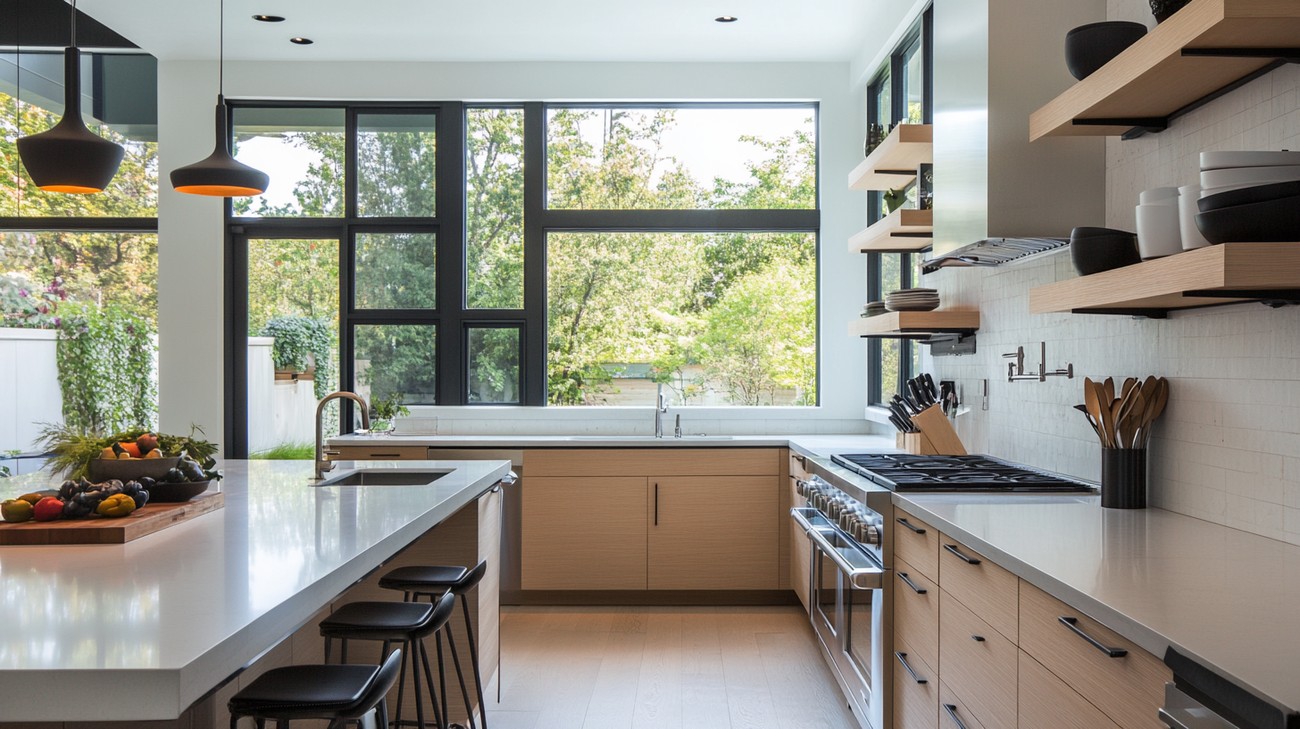
Frequently Asked Questions about Kitchen Remodel Plumbing
Do I need a professional plumber for my kitchen remodel?
While small kitchen remodel projects can be taken up as DIY tasks, for large-scale remodels involving significant changes in plumbing systems, hiring a professional plumber is recommended. They have the requisite skills, knowledge, and tools to ensure the plumbing installation or rerouting processes go smoothly and comply with building codes.
What are some common plumbing changes in a kitchen remodel?
Common plumbing changes during a kitchen remodel may include moving sinks, dishwashers, or refrigerators that require water; adding pot fillers or water purification systems; replacing old pipes; or installing additional sinks or faucets. The changes depend largely on the planned design and layout of your remodeled kitchen.
How does relocating the sink impact the kitchen remodel plumbing?
Relocating the kitchen sink might seem like a minor adjustment, but it can significantly impact the kitchen remodel plumbing. Water lines and drain pipes will need to be rerouted to support the new sink location. Typically, this is a task that should be left to professional plumbers.
What are the important considerations for dishwasher plumbing in a kitchen remodel?
In case of a dishwasher, the primary considerations include an adequate water supply line and a drain line. It's also crucial to ensure power supply for the dishwasher, though that's more of an electrical concern. Many modern kitchens also integrate the dishwasher with their cabinetry design for a seamless look, which needs careful planning.
How does the type of kitchen sink affect the remodel plumbing?
The type of sink you choose significantly impacts the remodel plumbing. If you are opting for a top-mount sink, the plumbing will be a little different from an under-mount or a farmhouse sink. The size (single or double bowl) and the material of the sink also influence the plumbing requirements.
Should I replace the pipes during a kitchen remodel?
Whether or not to replace pipes during a kitchen remodel largely depends on the age and condition of your existing plumbing. If you have old, worn-out pipes or have been facing problems with leaks, clogs, or poor water pressure, a kitchen remodel would be a good time to replace them.
What role does the choice of material play in my remodel plumbing?
The choice of material for your pipes can impact the maintenance, durability, and overall cost of your kitchen remodel plumbing. For instance, while PVC and CPVC are relatively cheaper, they are also less durable compared to copper or PEX tubing.
Can I add a pot filler during my kitchen remodel?
Yes, adding a pot filler during a kitchen remodel is quite popular and often a part of high-end kitchen remodels. It does, however, require some keen planning of the water supply line and pressure balancing, making it wise to consult with a professional plumber on the requirements.

Pros of Kitchen Remodel Plumbing
Enhances Functionality and Comfort
One of the primary benefits of kitchen remodel plumbing is the enhancement in functionality it provides in your kitchen space. By moving, adding, or updating a sink or dishwasher, you'll be able to create a more functional and convenient cooking and cleaning area.
Enables Layout Changes
Kitchen remodel plumbing gives the freedom to change the layout of your kitchen. You are not restricted to the original plumbing design, which might be outdated or inconvenient. This provides the opportunity for designing your dream kitchen with the right placement of appliances and plumbing fixtures.
Accommodates Advanced Appliances
As technology advances, more and more kitchen appliances, such as instant hot water dispensers and pot fillers, require professional plumbing. By updating your kitchen’s plumbing during a remodel, you are future-proofing your kitchen.
Improves Water Efficiency
Older plumbing systems can consume a lot of unnecessary water due to leaks or inefficient faucets and fixtures. When you remodel your kitchen’s plumbing, it's an ideal opportunity to install water-efficient faucets and appliances. This can significantly decrease your home’s water usage and reduce your water bills.
Increases Home Value
Renovating and modernising the kitchen, which includes updating the plumbing system can significantly enhance the value of your home. Prospective homebuyers appreciate a well-maintained and modern kitchen space, and thus, upgraded plumbing can be a selling point.
Ensures Compliance with Building Codes
Kitchen remodel plumbing ensures that the plumbing system in your home is up to date and in compliance with the latest building codes. This could save you from potential fines or issues if you plan to sell your home in the future.
Cons of Kitchen Remodel Plumbing
Cost
Perhaps the most significant downside of kitchen remodel plumbing is the cost. Depending on the scale of the project, the remodeling process can be quite expensive. This involves not just the cost of new plumbing fixtures, but also labor costs for plumbers and any potential repair work that might be needed.
May Require Professional Assistance
Not all kitchen remodel plumbing can be done as a DIY project. Depending on the complexity of the design, you may need to hire a professional plumber. This can significantly increase the costs of the remodel.
Time Consuming
Depending on the scope of the project, kitchen remodel plumbing can be a time-consuming endeavor. Your kitchen may be out of commission while the plumbing is being installed and tested. This means either eating out or making do with a temporary kitchen setup, which can be inconvenient.
Potential for Unexpected Setbacks
As with any renovation, during a kitchen remodel, you may uncover unexpected issues like water damage, out-of-code plumbing or unforeseen structural issues. These unexpected findings can extend the timeline and budget of the project.
Temporary Inconvenience
The process of remodeling can disrupt your familiar daily routine. You may have to deal with the noise from construction activities and limited access to your kitchen until the remodeling project is completed.
Possible Overcapitalization
If you spend too much on your kitchen remodel, including the plumbing, you may run the risk of overcapitalizing on your home. This means you might not get your money back in increased home value when you decide to sell it. It's vital to find the right balance between investing in home improvements and what's reasonable for your neighborhood's property market.

Myths and Misconceptions about Kitchen Remodel Plumbing
When it comes to remodeling a kitchen, the plumbing is often a huge aspect that homeowners need to consider. Unfortunately, there are a number of myths and misconceptions surrounding kitchen remodel plumbing that can lead homeowners astray, potentially causing delays, extra costs, or even damage to the plumbing system. In this post, we debunk some of these popular misconceptions.
Myth 1: Kitchen Remodel Plumbing is a Simple DIY Project
The Reality:
One of the most common misconceptions about kitchen remodel plumbing is that it's a simple task that anyone can handle, even without any prior experience or training in plumbing. The reality is that remodeling a kitchen’s plumbing system is a complex job that involves several steps, including selecting the correct pipes and fittings, properly sealing joints, and connecting the plumbing to the home's main water supply and waste line. While some people might be able to handle small repairs or installations, a full-scale kitchen remodel is typically best left to trained professionals.
Myth 2: All Plumbing Materials are the Same
The Reality:
Many homeowners believe that all plumbing materials are created equal and that the only difference is the price. This is not true. Each type of plumbing material has its own set of properties that makes it suitable for certain uses over others. For instance, copper pipes are known for their durability and resistance to corrosion, while PVC pipes are lighter, more flexible, and often less expensive. It's important to choose the right materials for your specific needs, and a plumbing professional can help guide you in this selection process.
Myth 3: Restructuring the Plumbing System is Too Expensive
The Reality:
While restructuring a kitchen’s plumbing system can indeed be an expensive endeavor, it's not always the best solution to opt for small-scale changes or repairs, particularly if your home’s plumbing system is old or deteriorated. On the contrary, investing in a total plumbing overhaul during a remodel can actually save you money in the long run, as it helps prevent future leaks, bursts, and other costly damages.
Myth 4: Plumbing Doesn’t Affect the Layout of a Kitchen
The Reality:
The truth is that the placement of the kitchen sink, dishwasher, and refrigerator (if it has a water dispenser or ice maker) can greatly impact the complexity and cost of a kitchen's plumbing remodel. Changing the location of these elements may require re-routing water supply lines or waste drainpipes, which can add to the cost and time involved in the remodel.
Myth 5: Older Homes Don’t Need Plumbing Updates
The Reality:
Some people think that if their home's plumbing system is still working, there's no need for updates or changes during a kitchen remodel. However, just because the plumbing is working doesn’t mean it's efficient or in good shape. Older homes, in particular, often have galvanized pipes, which are prone to corrosion and sediment buildup, leading to reduced water pressure and potential leaks. Upgrading your home's plumbing system can improve water pressure, increase efficiency, and prevent potential damage down the line.
Myth 6: Permits are Not Necessary for Kitchen Plumbing Remodel
The Reality:
This one is a particularly dangerous myth. In many cities, permits are required for most types of plumbing work, including kitchen remodels. Failing to obtain the necessary permits can result in hefty fines, can delay the completion of your remodel, and may even impact your ability to sell your home in the future.
There's no room for guesswork when it comes to kitchen remodel plumbing. It's important to make informed decisions to ensure the success of your project. Always consult a professional plumber before making big decisions and beware of these common misconceptions.
Summary
So, there you have it! Kitchen remodel plumbing can seem like a big task, but with the right planning and consideration, it's totally manageable. Engaging a professional plumber can reduce your stress levels significantly, ensuring that the pipes and fixtures are installed correctly, preventing leaks, saving you stress and money in the future.
If you're thinking of doing it yourself, don't forget the importance of understanding and sticking to local plumbing codes. Good thing though, having a clear vision of what you want your kitchen to look like can help, mainly when it comes to choosing suitable fixtures that match with the rest of your aesthetic.
The key takeaway? Kitchen remodel plumbing is more than just moving pipes and installing fittings. It's a complex combo of problem-solving, technical know-how, and practical knowledge. But when done right, it can turn your vision of an ideal kitchen into a reality, making your kitchen remodel feel oh so worth it!
About KYPD Plumbing
KYPD Plumbing is your reliable, go-to solution for all plumbing-related needs in Lexington, KY. With decades of experience in the trade, our experts are dedicated to providing top-notch, hassle-free services round the clock. We specialize in repairs, installations and maintenance, ensuring your water systems keep running smooth and clean. Not only do we value high-quality workmanship, but we also strive to maintain strong customer relationships through our outstanding service. When you choose KYPD Plumbing, you're choosing a trusted team that's committed to keeping your comfort and satisfaction at the forefront.
Tags: kitchen remodel, plumbing, home improvement,
